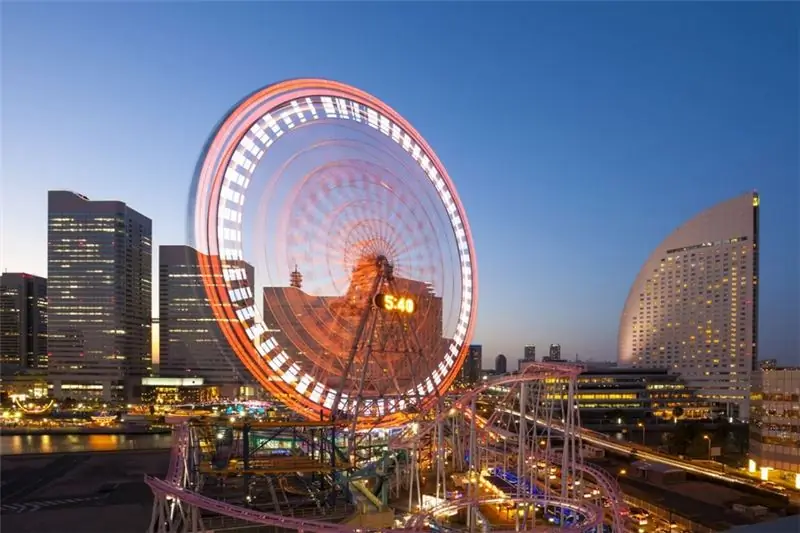
- What to visit and in which areas of Tokyo
- Traveling in Tokyo with benefits
- The taste of life and sake
- Travel and meditate
It is a great happiness for a tourist to get to the capital of Japan, this metropolis containing ultramodern architectural masterpieces, world technical innovations and monuments of ancient culture. Travelers who come here most often ask the question, not what to visit in Tokyo, but how to have time to see at least the main attractions.
The city amazes from the first moment with its layout incomprehensible for a European, a subway, the lines of which do not intersect with each other, a large number of people on the streets at any time of the day. Tour operators operating in the Japanese market warn that the list of places to visit may change dramatically, and for the better, it follows that you never need to worry about not seeing something in Tokyo.
What to visit and in which areas of Tokyo
Urban development is divided into 23 districts plus several dozen towns and villages, so trying to figure out the administrative division is not worth it, as well as the difference between districts. Another thing is important - to define your goals and look for objects worthy of them.
Do you like nightclubs, restaurants, fashion shows? "Welcome" to the districts of Harayuki and Shibuya, this is where young Japanese lovers of hanging out and club live. The dream is shopping, is there a huge list of Tokyo souvenirs and Japanese traditional goods to bring to relatives? Then you need to look for Akihabara, Kappabashi or Ameyoko.
The spirit of old Tokyo is still preserved by the districts of Asakusa, Harajuku and Ueno, here you can endlessly walk the streets, admire ancient temples, see how trade was going on a hundred years ago, and even buy something as a souvenir. In these areas of the Japanese capital, you can see both historical monuments and artifacts stored in major museums.
The most expensive and at the same time prestigious area of Tokyo is considered to be Ginza, that's what you can visit in Tokyo on your own. Accommodation here is fabulously expensive, but you can just come to admire the Imperial Palace, see the performances of the world-famous Kabuki Theater, sit with a cup of tea in a cozy cafe.
Traveling in Tokyo with benefits
Walking around the capital of Japan is an expensive pleasure, but there is a wonderful way to save money without limiting yourself in emotions and impressions. In Tokyo, you can purchase the Grutto Pass, the so-called tourist pass. The presence of such a pocket book provides an opportunity to visit many exhibition projects and museums free of charge. In addition, the Grutto Pass opens doors to marine, botanical and zoological parks, scientific centers - admission is free or with a big discount.
Importantly, this museum pass is valid for two months, so if you are lucky to return to Tokyo, you can continue your journey around the capital at a profit for your wallet. True, Grutto Pass is personalized, so it will not be possible to give it to a friend who decides to visit the Land of the Rising Sun.
The taste of life and sake
For many tourists from Europe who find themselves in the Japanese capital, everything seems exotic and worth visiting, even national cafes and restaurants. True, it is difficult to figure out the menu on your own, the help of a guide or a Japanese friend will be very helpful.
In Tokyo, you can find restaurants serving dishes from all over the world, but the guests are primarily interested in establishments serving traditional Japanese food - these are Ootoya, Matsuya, Yoshinoya.
Travel and meditate
Modern Tokyo is impressive, deafening and dazzling, but there is another city, getting into which, the traveler feels that time has stopped. This happens to him when he visits the capital's gardens and parks, when he gets acquainted with the ancient temple complexes.
Happo-en is one of the most famous gardens in Tokyo, its characteristic feature is the asymmetry of the layout. According to local residents, here you can enjoy the spectacle of eight different landscapes at once. On the shores of Tokyo Bay, the Hamarikyu alleys are located; their attraction is the tallest pine tree in Japan.
In the popularity rating of Tokyo's temples, the first line is occupied by Senso-ji, which is considered the oldest Buddhist building in the capital. It was built almost one and a half thousand years ago, today it is located in the Asakusa region. Also, other temples, complexes, including the Tosegu temple, enjoy the attention of city guests and local residents; a place of worship named after the goddess Kannon.
Koke, the Imperial Palace, can also be called a "tidbit" for tourists, but few will be able to contemplate it, since access inside is possible only a few times a year during major public holidays.
Another stunning sight awaits guests of Tokyo, but at a certain period, is the blossoming sakura. You can see this pale pink paradise in the Imperial Park, in the Naga-Meguro quarter.






